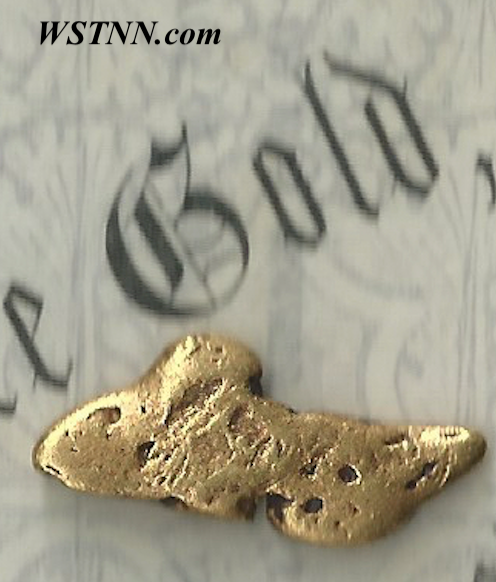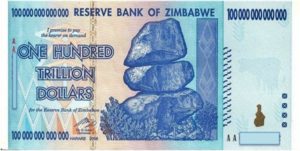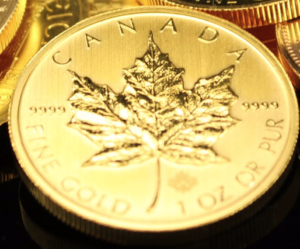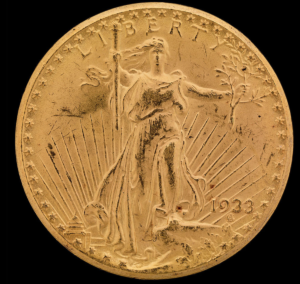by Fred Fuld III
Gold and silver royalty and streaming companies offer a unique way to invest in precious metals. Unlike traditional mining companies, royalty companies provide upfront capital to miners in exchange for a percentage of the revenue or the metal produced from a mine. Streaming companies, on the other hand, provide financing to mining operations in exchange for the right to purchase a percentage of the mine’s production at a predetermined price. These business models allow royalty and streaming companies to benefit from rising metal prices without the operational risks associated with mining, such as production costs and environmental challenges.
The price of gold has been on an upward trend due to several factors, including economic uncertainty, inflation concerns, and geopolitical tensions. Gold is often seen as a safe-haven asset during times of crisis, and with central banks around the world adopting loose monetary policies, the appeal of gold and silver as a hedge against inflation has increased. Additionally, declining real interest rates have made non-yielding assets like gold more attractive to investors. As these factors persist, the price of gold may continue to rise, benefiting companies in the royalty and streaming sectors. In this article, we’ll explore five top gold and silver royalty and streaming stocks—Osisko Gold Royalties (OR), Wheaton Precious Metals (WPM), Royal Gold (RGLD), Franco-Nevada (FNV), and Sandstorm Gold (SAND). Each of these companies has a market capitalization exceeding $1 billion and offers a dividend yield above 1%.
Osisko Gold Royalties (OR)
Osisko Gold Royalties, headquartered in Montreal, Canada, is a leading royalty company focused on precious metals. The company’s flagship asset is its 5% net smelter return royalty on the Canadian Malartic mine, one of the largest gold mines in Canada. Osisko has a diversified portfolio of over 160 royalties and streams, providing it with exposure to a wide range of precious metal projects across North and South America. The company’s strategic focus on low-cost, long-life assets has positioned it well to benefit from rising gold prices.
The stock, which has a low amount of long term debt, trades at 30 times forward earnings. With a market capitalization of over $2 billion and a dividend yield of approximately 1.5%, Osisko Gold Royalties is an attractive option for investors seeking exposure to the gold market.
Wheaton Precious Metals (WPM)
Wheaton Precious Metals, based in Vancouver, Canada, is one of the largest precious metals streaming companies in the world. The company has a diversified portfolio of streams on gold, silver, and palladium mines located in the Americas and Europe. Wheaton’s business model allows it to acquire metals at a fixed cost, providing significant upside potential in a rising price environment. The company’s high-quality assets and strong financial position have made it a leader in the streaming industry.
The company is debt free, has a price to earnings ratio of 46, and a forward P/E of 35. A market capitalization of over $20 billion and a dividend yield of around 1.2%, Wheaton Precious Metals offers a compelling investment opportunity for those looking to benefit from higher precious metal prices.
Royal Gold (RGLD)
Royal Gold, headquartered in Denver, Colorado, is a premier gold royalty and streaming company with a portfolio of over 180 properties across the globe. The company’s portfolio includes some of the most prolific gold mines in the world, including the Mount Milligan mine in Canada and the Peñasquito mine in Mexico. Royal Gold’s focus on high-quality, low-cost assets has allowed it to generate strong cash flows and consistently pay dividends to shareholders.
This company, with no long term debt, has a price to earnings ratio of 36, and a forward P/E of 22. The company’s market capitalization exceeds $8 billion, and it offers a dividend yield of approximately 1.2%. Royal Gold’s diversified portfolio and solid financials make it a top pick in the royalty and streaming space.
Franco-Nevada (FNV)
Franco-Nevada, based in Toronto, Canada, is the largest gold-focused royalty and streaming company in the world. The company has a diverse portfolio of over 400 assets, including gold, silver, and other precious metals, as well as oil and gas interests. Franco-Nevada’s business model is centered around low-risk, high-margin investments that provide long-term cash flow stability. The company’s strong balance sheet and disciplined approach to capital allocation have made it a favorite among investors.
The company is debt free and has a forward P/E of 31. With a market capitalization of over $30 billion and a dividend yield of about 1%, Franco-Nevada is a cornerstone investment for those seeking exposure to gold and silver.
Sandstorm Gold (SAND)
Sandstorm Gold, headquartered in Vancouver, Canada, is a growing gold streaming and royalty company with a portfolio of over 200 assets across the globe. The company has focused on acquiring streams and royalties on early-stage projects with significant exploration potential, providing it with exposure to future growth. Sandstorm’s management team has a strong track record of identifying and investing in high-quality assets, positioning the company for long-term success.
The stock’s trailing P/E is fairly high at 54, but the forward P/E is 34. Sporting a market capitalization of over $1 billion and a dividend yield of approximately 1%, Sandstorm Gold is an emerging player in the royalty and streaming sector.
Summary
As a group, these top gold and silver royalty and streaming stocks—Osisko Gold Royalties, Wheaton Precious Metals, Royal Gold, Franco-Nevada, and Sandstorm Gold—offer investors a unique and low-risk way to gain exposure to the rising prices of precious metals.
With market capitalizations exceeding $1 billion and dividend yields above 1%, these companies provide a combination of stability, income, and growth potential.
Their business models, which focus on acquiring royalties and streams from high-quality assets, position them well to benefit from ongoing economic uncertainty and the continued rise in gold prices. For investors looking to capitalize on the strength of the gold market, these stocks are worth serious consideration.
Disclosure: Author didn’t own any of the above at the time the article was written.








